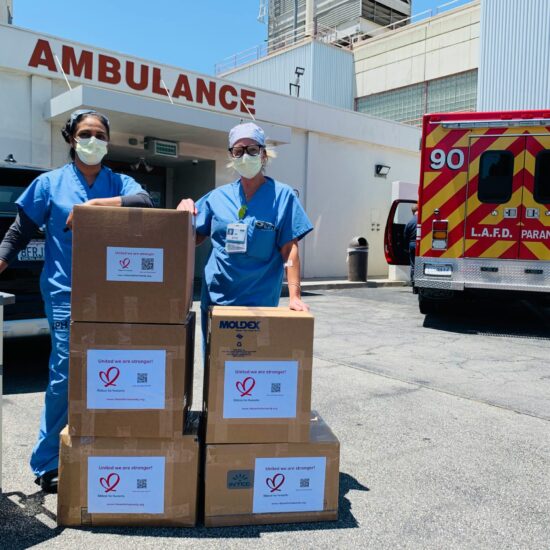

Anger and shame: Irish women protest following the death of Savita Halappanavar Source: The Telegraph; Photo: AFP/Getty Images
I’m tempted to say that Savita Halappanavar died at University Hospital Galway in Ireland from a 17-week, wanted pregnancy that went awry. But it’s more accurate to say that she died in a Catholic country from a policy that deemed the heartbeat of a dying fetus to be more important than the life of its mother. Some may argue that Halappanavar would not have died had she been in a U.S. hospital, but after the wrangling over reproductive rights in the last year’s national elections I think she very well could have.
Halappanavar was 31 years old when she was admitted to University Hospital Galway for back pain. According to the Irish Times, she presented fully dilated and leaking amniotic fluid. When she was told that a miscarriage was in process, she requested that the pregnancy be terminated. But the fetus still had a heartbeat, her doctors said, which meant in that Catholic hospital and country that terminating the pregnancy was not permissible. It didn’t matter that she was not Catholic. Three days later, the fetus died and Savita Halappanavar was admitted to the intensive care unit, where she died of septicemia.
Abortion is illegal in Ireland, except to save the life of the mother. But, as noted in a 2010 report by Human Rights Watch, that country rarely supports this exception. Marianne Møllmann of Amnesty International maintains that health professionals in Ireland want clarity on when they can intervene in cases like Halappanavar’s without fear of criminal prosecution. Indeed, in the case of Halappanavar, the hospital and its clinicians essentially invoked a “conscience clause” that provides health care providers to opt out of intervening in ways that they find morally objectionable. Dr. Jen Gunter, an OB-GYN physician, has suggested that the clinicians didn’t intervene because they did not want to be judged as violating the country’s abortion laws and criminally prosecuted. She argues that Halappanavar’s symptoms should have assured that she receive pain medication and a termination of the pregnancy immediately to prevent sepsis.
Could this happen in the United States, where abortion is legal?
In the nearly 40 years since Roe v. Wade, there have been continual efforts to change or weaken the law. Consider Congressional Representative Joe Walsh of Illinois, who said during an October debate with opponent Tammy Duckworth that he was opposed to abortion “without exception.” He claimed that abortion is never necessary to save the life of the mother because of “advances in science and technology.” He later backtracked, acknowledging that there may be rare occasions where an abortion would be necessary to save the life of the mother. (Walsh lost his race to Duckworth.)
He’s hardly alone. The Republican Party Platform calls for the banning of abortions without exception for rape, incest, or to save the life of the mother. Those who oppose abortion when the mother’s life is in danger argue that this exception could become a slippery slope, where, for example, a woman who said she was suicidal because of a pregnancy could get an abortion.
The Republican platform continues: “No healthcare professional or organization should ever be required to perform, provide for, withhold, or refer for a medical service against their conscience.” A federal “conscience clause” has been around since 1973, when Congress enacted the Church Amendment after the Supreme Court upheld Roe v. Wade. Almost all states passed similar legislation in the subsequent five years. But physician Judy Stone argues that “conscience clause” is a euphemism for “shirking our responsibility to put the patient first,” noting that the clause has been invoked by health care professionals who denied care to people with HIV in the early days of the epidemic and to a lesbian who wanted fertility treatment.
So how do we avoid such contentious terrain? One approach is to make contraception more available. (A recent study in Obstetrics and Gynecology shows that access to free birth control decreases abortion rates significantly). In a prior blog post on JAMA News Forum, I reported on a young, sexually active adult in my extended family who stopped using condoms because she and her partner can’t afford them–a real issue for women with no disposable income. The Affordable Care Act includes coverage of preventive services for women, including contraception, without cost sharing. Last year, the House of Representatives passed HR. 358, which aims to prohibit this provision. And Lawrence Gostin recently wrote about religious organizations’ fight with the Obama administration over including contraception coverage in insurance plans for their employees, even with the negotiated provision that the insurance companies bypass employers and deal directly with employees. At a February Congressional hearing on the administration’s contraception rule, Congressman Joe Walsh is reported to have summed up the frame as: “This is not about women. This is not about contraceptives. This is about religious freedom.” But for health care professionals, it is about women, their health, and contraception.
Since the elections, some state legislatures have been pushing for laws that limit abortion. For example, the Ohio legislature was considering the so-called the “heartbeat ban” that would ban abortion if there is a fetal heartbeat–just the situation that Savita Halappanavar was in–and prohibit the coverage of preventive services for women, including contraception.
The American Medical Association (AMA) and American Nurses Association (ANA) support reproductive rights and treat abortion as the legal medical procedure it is. The ANA position includes the following:
…abortion is largely a symptom of social failure. The controversy over abortion is just one of many stages on which the critical social issues of access to care, freedom of choice, and the right to privacy are being played out. The American Nurses Association cannot support initiatives that ignore individual human rights, decrease access to care, or increase the potential for adversity in the human condition.
But I’ve seen no official position or statement on Savita Halappanavar’s case from either organization. Shouldn’t they make sure that no case in this country can end like hers did in Ireland?
Diana J. Mason, PhD, RN, FAAN, Rudin Professor of Nursing








